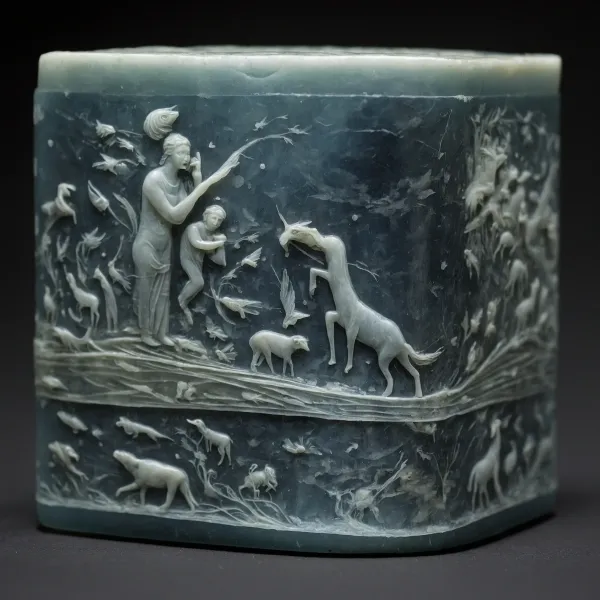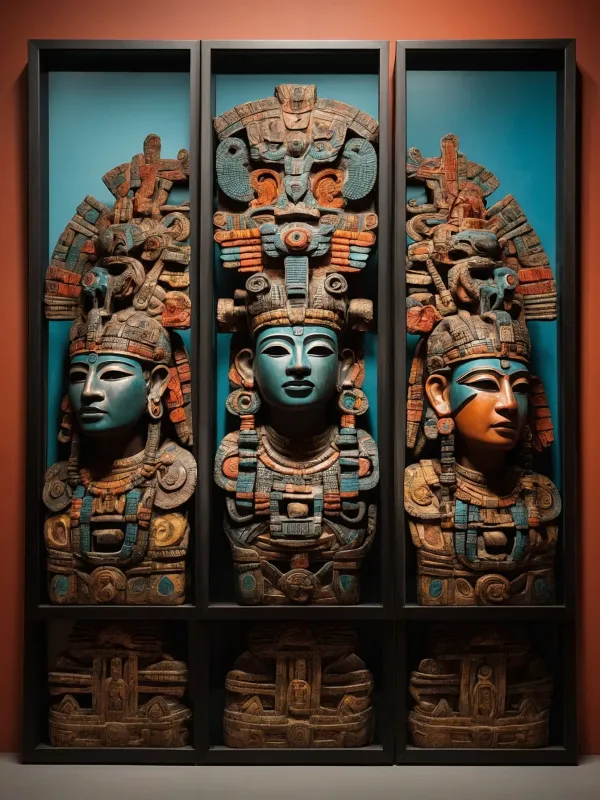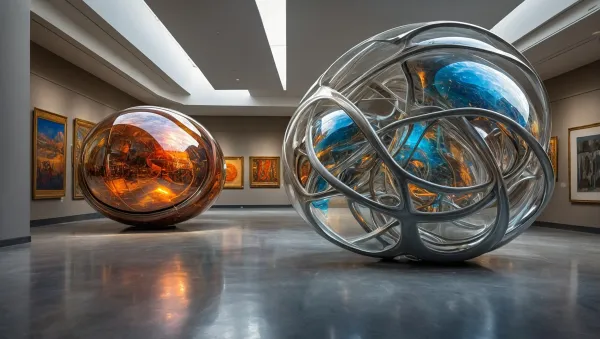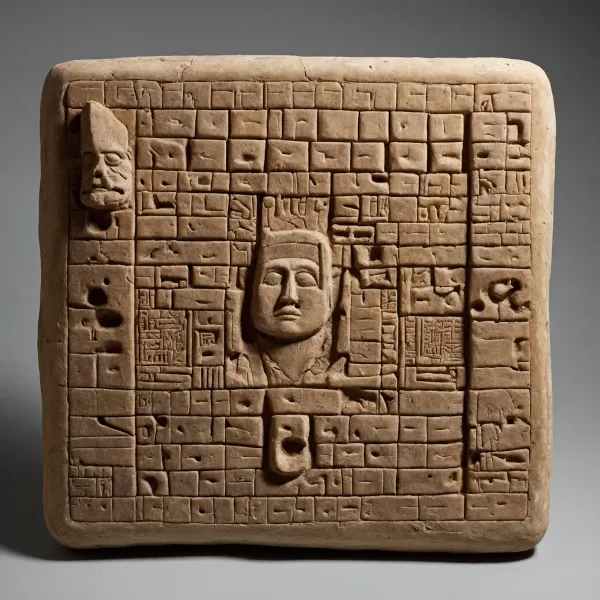Susurrating Runes
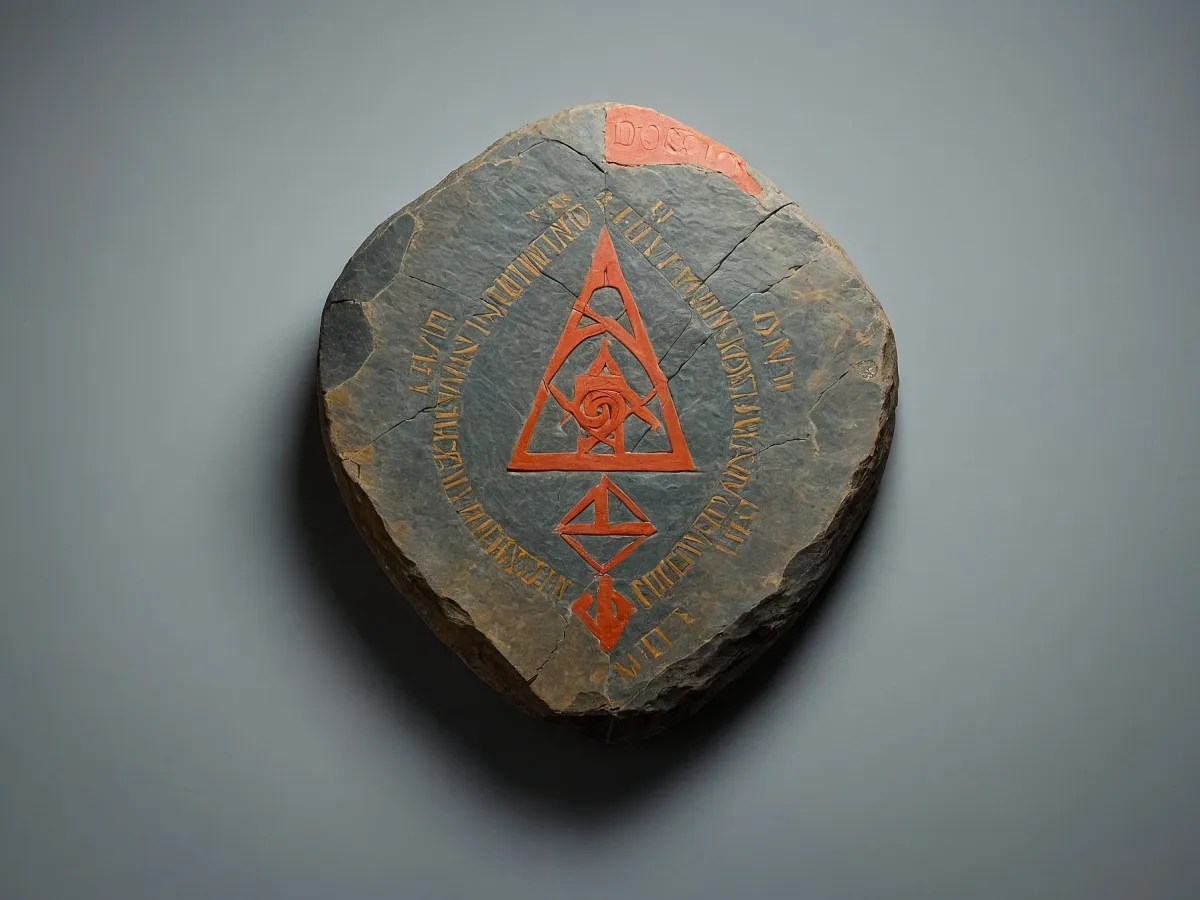
The Glyph of Epochs remains one of the most tantalizing relics within the Ravensfield Collection. This opaque circular slate, adorned with a blood-red symbol and archaic script, is attributed to an ancient civilization known for its esoteric rituals. Unearthed in what is now modern-day Greece, its unique iconography invites both trepidation and marvel.
Though the artist’s name has not survived, the meticulous craftsmanship suggests it was created by a highly skilled individual or group tasked with recording potent knowledge into stone. The triangular insignia at its heart spirals inward, hinting at tales beyond mere human comprehension. Its relevance endures as a testament to humanity’s quest for cosmic understanding.
Historians believe this glyph served not merely as decoration but as a vessel for darkly forbidden lore. Legend has it that it holds an essence capable of warping reality—a window into dimensions uncharted by mortal minds. Witnesses report dreams haunted by skeletal figures cloaked in nebulae upon viewing the piece; these phantasms are said to whisper truths only comprehensible in the liminal state between sleep and wakefulness.
“Those who stared too long into its swirling vortex found themselves inexplicably transformed,” - Dr. Alaric Thomason, Parapsychologist.
During early examinations in 1925, curator Meredith Leigh observed hues shifting across the red pigment as if animated by unseen forces. Intriguingly, several scholars working late nights near the artifact began suffering from insomnia coupled with vivid hallucinatory visions—accounts that eerily echoed scripts deciphered from around its edge: “To look within is to unravel your mind.”
Efforts to translate its inscription have sparked considerable controversy among linguistic experts and occult historians. Some propose that it chronicles cosmological events yet unknown to our science, while others argue it outlines transformations akin to alchemical processes on human consciousness rather than physical matter—triggering debates about whether this engraving encodes metaphysical information designed for divine illumination or sinister manipulation.
The mesmerizing patterns inscribed on the glyph, surviving millennia unscathed, inspire speculative imagination and intellectual discourse, pivotal to understanding the past and illuminating paths forward. As audiences gather before this storied stone today, they cannot help but ponder profound questions concerning identity and transformation, observed in this serene yet aspirational arcane legacy.

